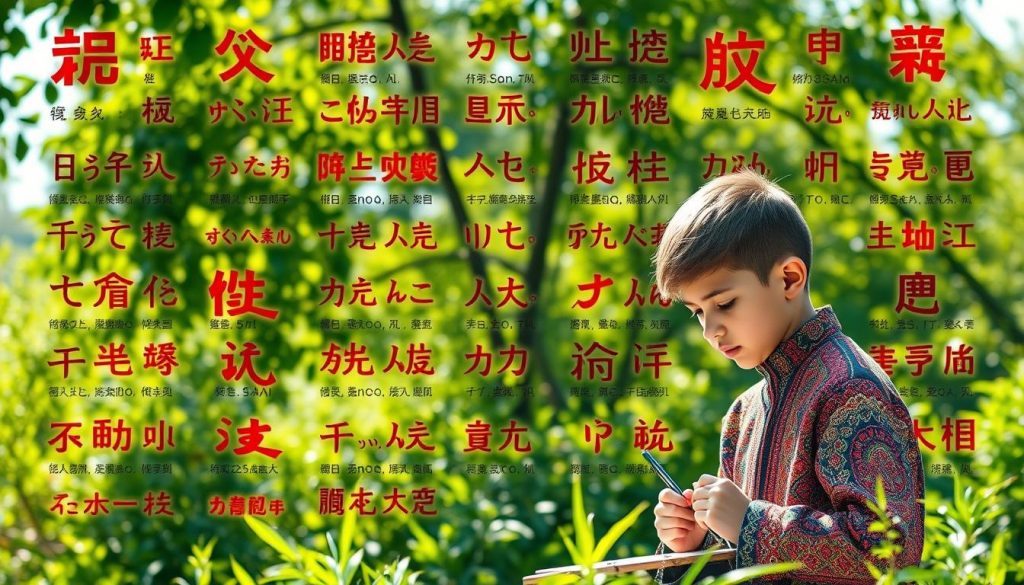Have you ever wondered how a nation balances multiple languages while preserving its cultural identity? In a world where communication bridges gaps, language plays a pivotal role in shaping societies. One such country stands out for its unique linguistic landscape.
This nation is home to over 130 nationalities, each contributing to its rich cultural tapestry. Here, two primary languages dominate daily life. Kazakh, the official language, reflects the country’s heritage, while Russian serves as the language of interethnic communication.
From schools to businesses, these languages coexist, influencing education, governance, and everyday interactions. The shift from Cyrillic to Latin script for Kazakh adds another layer to this evolving story. Dive in to explore how language shapes identity in this fascinating country.
Key Takeaways
- Kazakh is the official language, deeply rooted in the nation’s heritage.
- Russian acts as a bridge for communication among diverse groups.
- The country is transitioning from Cyrillic to Latin script for Kazakh.
- Over 130 nationalities contribute to its linguistic diversity.
- Language plays a key role in shaping cultural and national identity.
Introduction to Kazakhstan’s Linguistic Landscape
What makes a country’s linguistic identity so unique and diverse? In this Central Asian nation, over 130 ethnic groups contribute to a rich tapestry of languages. This diversity reflects centuries of cultural exchange and historical influences.

An Overview of Linguistic Diversity
Kazakhstan is home to a wide array of languages, from indigenous dialects to those borrowed from neighboring regions. The Kazakh language, rooted in the Turkic family, is the official tongue. Russian, however, remains a key medium for interethnic communication.
Here’s a snapshot of the linguistic landscape:
| Language | Role |
|---|---|
| Kazakh | Official language, cultural heritage |
| Russian | Bridge for communication |
| Minority Languages | Uzbek, Uyghur, German, and more |
Historical and Cultural Influences
The Soviet era left a lasting impact on the linguistic landscape. During this time, Russian became dominant in education and governance. However, the country’s nomadic heritage and Silk Road connections also shaped its language, blending words from Arabic, Chinese, and other cultures.
“Language is the roadmap of a culture. It tells you where its people came from and where they are going.”
Today, this unique blend of influences continues to shape Kazakhstan’s identity. From schools to businesses, the coexistence of multiple languages fosters unity in diversity.
Kazakhstan: Official and widely spoken languages
How does a country unite its people through the power of language? In this Central Asian nation, two languages stand out: Kazakh and Russian. Together, they bridge cultural gaps and foster unity among diverse groups.
Kazakh: The Heart of National Identity
The Kazakh language is more than just a means of communication. It’s a symbol of heritage and pride. Rooted in the Turkic family, it’s spoken by over 64% of the population. The Constitution mandates its use as the official language, ensuring its role in governance and education.
Historically, the Soviet Union influenced the use of Cyrillic script for Kazakh. However, the country is now transitioning to Latin script. This shift reflects a desire to reconnect with its roots and simplify global communication.

Russian: The Language of Connection
While Kazakh represents cultural identity, Russian serves as a bridge. About 95% of the population is fluent in it, making it a key tool for interethnic communication. From academia to business, Russian remains widely used, especially in urban areas.
This dual-language system creates a unique balance. Kazakh preserves heritage, while Russian fosters inclusivity. Together, they shape the nation’s identity and ensure smooth interactions among its diverse population.
- Kazakh is the official language, deeply tied to cultural heritage.
- Russian acts as a vital communication tool across ethnic groups.
- The transition to Latin script highlights modernization efforts.
- Both languages play crucial roles in education and governance.
Indigenous and Minority Languages of Kazakhstan
Have you ever explored the lesser-known dialects that shape a nation’s cultural fabric? Beyond the dominant Kazakh and Russian languages, this country is home to a vibrant array of indigenous and minority tongues. These languages, often overlooked, play a crucial role in preserving heritage and fostering diversity.

Unique Indigenous Dialects
Indigenous dialects like Dungan, Ili Turki, and Ingush showcase the linguistic richness of the region. Dungan, for instance, is spoken by a small community with roots in China and Kyrgyzstan. It blends elements of Mandarin with Turkic influences, creating a unique language form.
Ili Turki, native to both Kazakhstan and China, is another fascinating example. This dialect reflects centuries of cultural exchange along the Silk Road. Ingush, though less common, is a testament to the resilience of minority groups in preserving their linguistic identity.
Protected Minority Languages
Laws in this country ensure the preservation of minority languages like Ukrainian, German, Uyghur, and Tatar. These languages are not just spoken at home but are also used in schools and local governance. This legal protection helps maintain cultural diversity and enriches interethnic communication.
For example, Uyghur, spoken by around 300,000 people, is a vital part of the cultural tapestry. Similarly, German, with nearly 958,000 speakers, reflects the historical migration patterns of the Soviet Union era.
| Language | Speakers | Significance |
|---|---|---|
| Uyghur | 300,000 | Cultural heritage |
| German | 958,000 | Historical migration |
| Tatar | 328,000 | Community identity |
These efforts to safeguard minority languages are essential in a world where globalization often threatens linguistic diversity. By preserving these tongues, the country ensures that its cultural heritage remains vibrant and accessible to future generations.
The Evolution of the Kazakh Language and Script
What drives a language to evolve over time, adapting to new cultural and political landscapes? The Kazakh language offers a fascinating case study in linguistic transformation. From its roots in the Turkic family to its modern-day script changes, the journey of this language reflects a rich history of influence and adaptation.

Transition from Cyrillic to Latin
The Kazakh script has undergone significant changes over the past century. Initially written in Arabic, it shifted to Latin in 1929, only to adopt Cyrillic in 1940 under the Soviet Union. Today, the country is transitioning back to a Latin-based alphabet, a move aimed at modernizing the language and enhancing global communication.
This transition, set to be completed by 2025, involves rewriting educational materials, literature, and official documents. The new Latin alphabet consists of 32 letters, including nine that represent unique Kazakh sounds. This change not only simplifies the script but also aligns it with the majority of global information published in Latin.
Influences from Russian and Surrounding Languages
The Kazakh language has been shaped by a variety of influences, from Russian to Chinese, Arabic, and Uzbek. During the Soviet era, Russian became dominant in education and governance, leaving a lasting impact on Kazakh vocabulary and structure. Neighboring languages like Uyghur and Tatar have also contributed to its rich linguistic tapestry.
These influences are evident in the multiple dialects of Kazakh, including Southern, Western, and Northeastern forms. Each dialect reflects the historical and cultural exchanges that have occurred over centuries, making the language a living record of the region’s diverse heritage.
The evolution of the Kazakh language is more than a linguistic shift; it’s a reflection of cultural pride and a dynamic process of adaptation in a changing world. As the country moves forward with its script transition, it continues to honor its past while embracing the future.
Global Influence and Cultural Exchange in Kazakhstan
How does a country leverage language to connect with the world? In this Central Asian nation, the answer lies in its dynamic approach to multilingualism. Beyond Kazakh and Russian, foreign languages are gaining traction, reflecting the country’s global ambitions.
Role of English and Other Foreign Languages
English is becoming increasingly popular, especially among younger generations. Schools and universities are integrating it into their curricula to prepare students for international opportunities. This shift is driven by the need to expand economic and cultural ties globally.
Other foreign languages like German, Arabic, and Chinese also play significant roles. These languages are essential in tourism and international business, helping the country engage with diverse markets. For instance, Chinese is gaining importance due to growing trade relations with China.
Cultural Renaissance and Economic Impact
The rise of multilingualism is fueling a cultural renaissance. Art, media, and business practices are evolving, influenced by global exchanges. This cultural shift is also boosting the economy, as the country gains recognition in sports, commerce, and other global arenas.
For example, the opening of a Beijing Language and Culture University branch in Astana highlights the importance of language in fostering international partnerships. Such initiatives are creating opportunities for cultural and economic growth.
- English is integral to education and business, preparing the next generation for global challenges.
- Foreign languages like German and Chinese enhance tourism and trade.
- Cultural exchange is shaping art, media, and business practices.
- Multilingualism is a key driver of economic and cultural progress.
By embracing multiple languages, this country is not only preserving its heritage but also building bridges with the world. Language is more than a tool for communication—it’s a gateway to global opportunities.
Conclusion
What role does language play in shaping a nation’s identity and global connections? In this Central Asian region, the Kazakh language stands as a symbol of cultural pride, while Russian bridges diverse communities. Together, they reflect a unique blend of tradition and modernity.
Historical influences, from the Soviet Union to Silk Road exchanges, have molded this linguistic landscape. The transition from Cyrillic to Latin script for Kazakh highlights a forward-looking approach. Minority languages like Uyghur and German add depth to this rich tapestry.
Today, language is more than a tool for communication. It’s a gateway to global opportunities. English and other foreign tongues are gaining traction, fostering cultural and economic ties worldwide. This balance between heritage and progress defines the region’s identity.
Explore this vibrant culture through its diverse linguistic heritage. It’s a story of unity, adaptation, and connection to the world.
The above is subject to change.
Check back often to TRAVEL.COM for the latest travel tips and deals.
Here are some Tours & Sightseeing suggestions that might pique your interests!
